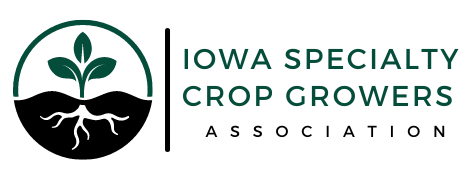Ruth Litchfield
Food Science and Human Nutrition
515-294-9484
litch@iastate.edu
Sarah Francis
Food Science and Human Nutrition
515-294-1456
slfranci@iastate.edu
Cynthia Haynes
Associate Professor in Horticulture
515-294-4006
chaynes@iastate.edu
It is that time of the year when there is an abundance of summer squash in the garden.
Check your garden each day, as summer squash varieties grow quickly. The squash should be harvested while still immature, and while the rind is tender and edible. Ripe squash will be firm, fairly heavy for its size and colorful. Smaller squash (6-8 inches long) tends to be more tender and have fewer seeds. Pattypan squash is an exception and has a dense interior. For more information on growing and harvesting summer squash, view this educational video by Iowa State University Extension and Outreach.
Zucchini is one of the most versatile vegetables. It can be used for casseroles, salads, soups, relish, quick breads, cakes and muffins, and even cookies. Zucchini can be the centerpiece of a meal. Watch this video to make cheesy pasta with zucchini.
Summer squash has a short storage life compared to winter squash. Squash should be wrapped in a plastic bag and stored in the crisper of your refrigerator. They will last one to two weeks.
Not able to keep up with the squash you are harvesting? Summer squash can be frozen by slicing, blanching and packaging in freezer bags. They will last up to one year in the freezer. Brush up on freezing vegetables in this video.
There is so much more to summer squash than just zucchini or yellow squash. Consider trying some of the less familiar summer squash varieties, which are just as versatile as zucchini.
- Chayote squash. Chayote squash is green and pear shaped with a dimpled rind. It is low in calories and tastes similar to cucumber. This squash can be grilled, sautéed, or baked.
- Cousa squash. This squash is similar to zucchini but lighter in color, short and squatty. Cousa squash is slightly sweeter, but can be used similarly to zucchini. This squash is great for stuffing with rice and meat.
- Yellow (golden) zucchini. Don’t confuse yellow zucchini with yellow squash. To distinguish the two, look at the neck of the squash; yellow zucchini won’t taper at the neck, whereas yellow squash will. Yellow zucchini can be used like green zucchini and has a slightly sweeter flavor.
- Yellow squash.
- Straightneck. This squash has a slightly tapered neck, bulbous base, bumpy skin and pale white flesh.
- Crookneck. This squash has a slender neck that is curved at the top and bulbous bottom.
- Pattypan squash. This squash is uniquely shaped, somewhat spherical with scalloped edges. They grow in a variety of colors from yellow to green. Pattypan squash are crunchy, making them great for salads or a quick saute.
- Round zucchini. This squash is also known as eight ball zucchini. It has the same flavor and texture as zucchini but is round. The short and wide size makes this squash ideal for stuffing.
Join the nutrition and wellness team during the complementary Food Preservation 101 online class. For those interested in learning more about gardening, contact your ISU Extension and Outreach county office for information about the Master Gardener program. Training begins across the state this fall.
The Sow, Grow, Eat and Keep quickinars are 5-15 minute online lessons of seasonally appropriate topics for the garden, food preparation, and food preservation. The final topic next week will be curing potatoes and healthy veggie dip.
For additional resources and publications, visit the Sow, Grow, East and Keep web page. Send your food or garden questions to sowgroweatkeep@iastate.edu.
